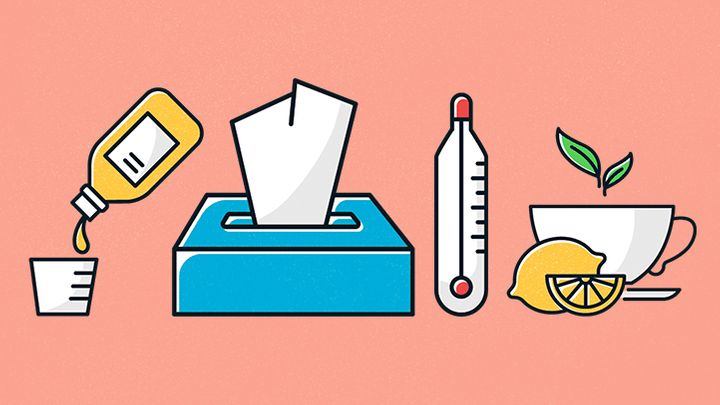8 Home Remedies for Common Cold and Cough
Have you caught a cold yet? It’s no surprise! Over 200 different cold viruses are capable of infecting us. It affects adults up to four times per year, with children being affected even more frequently. But how can you get back into shape quickly? We show you the best cold-resistance tips.
1. Consume Enough
Herbal teas that are warming, such as linden blossom tea, chamomile tea, thyme tea, or elderflower tea, are especially beneficial. They are not only hydrating, but also calming, anti-inflammatory, and warming. Furthermore, mucus in the nose, sinuses, and bronchi is liquefied from within. This makes blowing your nose and coughing easier.
2. Gargle
A cold usually starts with a sore throat or difficulty swallowing. Gargling with salt water (1/2 teaspoon in 1 glass of warm water) or sage tea can help alleviate these uncomfortable cold symptoms.
3. A cool bath
A warm cold bath is a good idea if a cold is on the way. The water should not be too hot (maximum temperature 39 degrees, bathing time 20 minutes) and can be enriched with essential oils like eucalyptus oil, pine needle oil, or thyme oil. People who are prone to allergies, asthmatics, and children should avoid using oils, particularly menthol. Its essential ingredients can irritate small children’s respiratory tracts. Breathing issues ranging from minor to life-threatening shortness of breath can result.
4. Relaxation and rest
During a cold, the body’s primary focus is on eliminating pathogens. He’ll need a lot of energy to do this. As a result, it is a good cold tip to ensure relaxation, adequate sleep, and little stress. During a cold, avoid physical exertion and sports.
5. Natural cures
Home remedies can still help you get rid of a common cold and get back on your feet quickly. Recovery foods include potato wraps, onion juice, and chicken soup, to name a few.
6. Inhale
Inhalations are also among the top ten best cold remedies. Water vapor inhaled moistens the airways and liquefies viscous mucus. Herbal supplements, such as peppermint or chamomile, have anti-inflammatory and calming properties. A bowl of hot water is required for steam inhalation. The head is not too close to the bowl and is not covered with a towel. Deeply and calmly inhale. Experiment with breathing through your mouth and nose alternately.
7. Properly blow your nose
People with runny noses should avoid blowing their noses too hard. Pathogenic pathogens can then enter the paranasal sinuses and cause inflammation (sinusitis). When blowing your nose, always close one nostril and blow through the other. It’s best to simply wipe your nose instead of blowing it.
8. Keep yourself warm
Wear a towel or scarf around your neck if you have a sore throat to keep it warm. A hot water bottle can be used to warm up cold feet (caution: not if you have a fever). Cold feet cause poor blood circulation throughout the body, particularly in the mucous membranes of the respiratory tract. Cold viruses spread more easily as a result of this.

